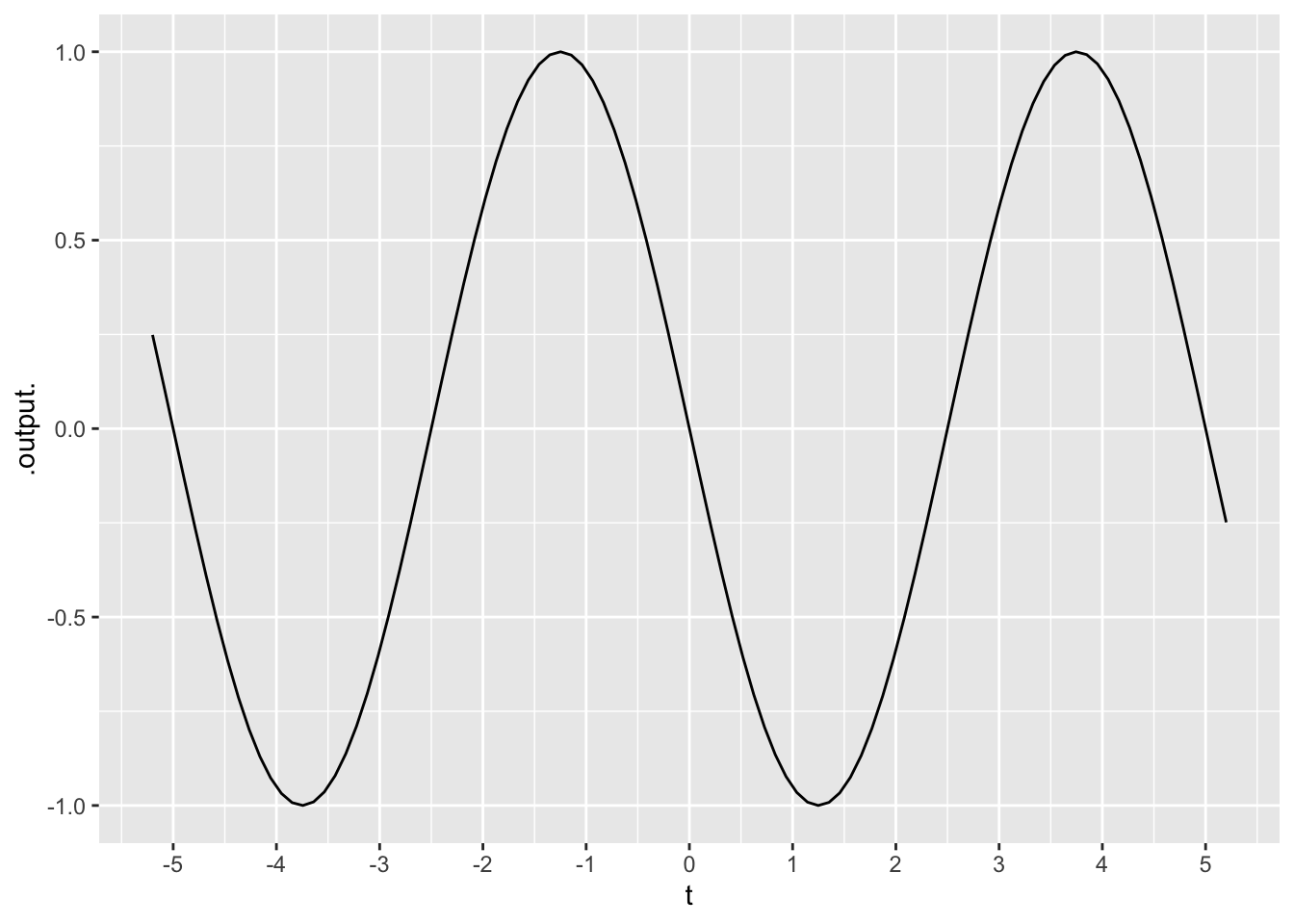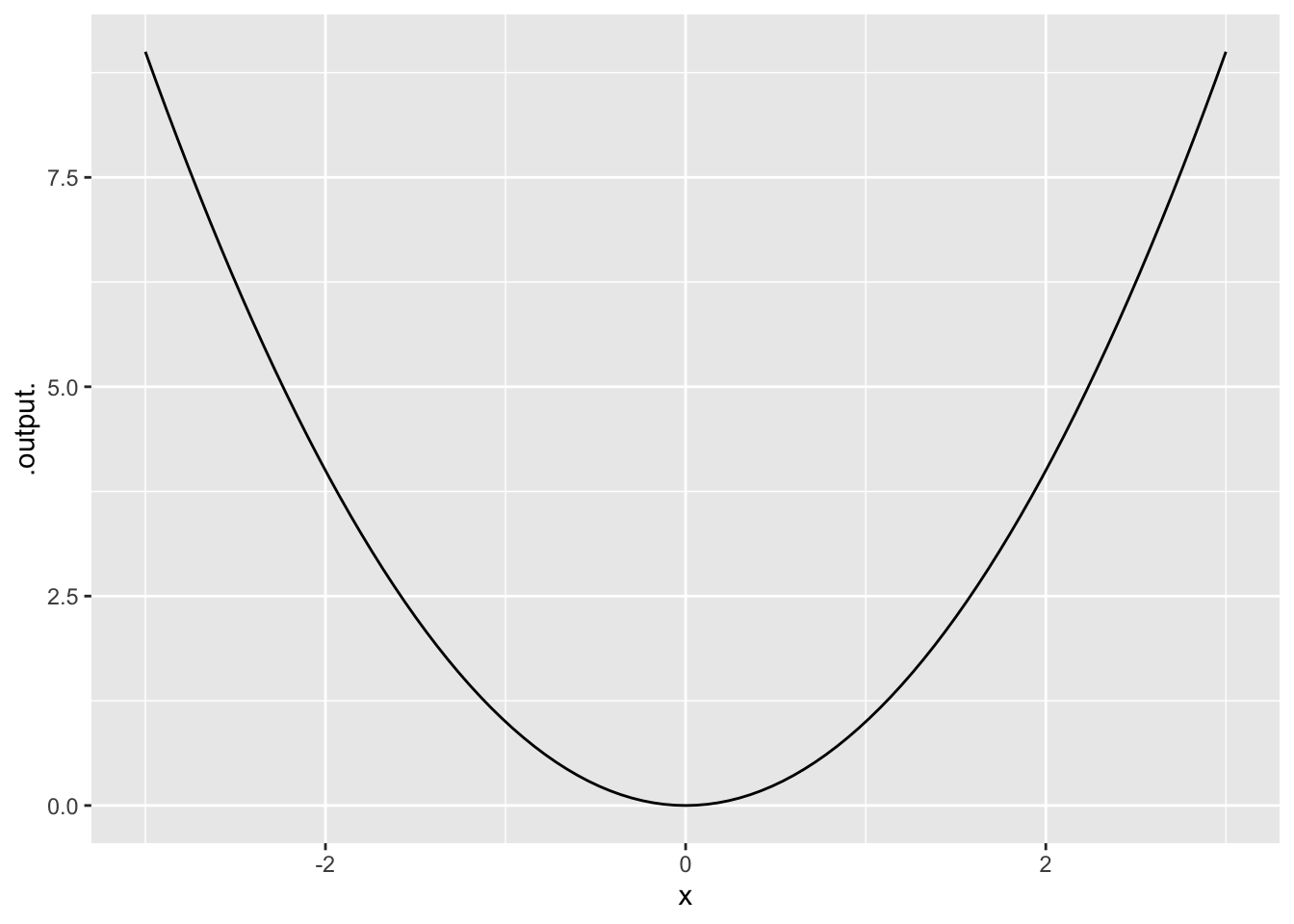
Chap 4 Review
\[ \newcommand{\dnorm}{\text{dnorm}} \newcommand{\pnorm}{\text{pnorm}} \newcommand{\recip}{\text{recip}} \]
Exercise 1 Considering the function shown in Figure fig-drill-rev2-01, at which of these inputs is the function output nearly zero?
\((x=0, y=6)\)
\((x=1, y=5)\)
\((x=-2, y=6)\)
\((x=0, y=1)\)
question id: drill-Quiz-2-9
Exercise 2 Considering the function shown in Figure fig-drill-rev2-01, at which of these inputs is the function output nearly 1?
\((x=0, y=6)\)
\((x=1, y=5)\)
\((x=-2, y=6)\)
\((x=0, y=1)\)
question id: drill-Quiz-2-10
Exercise 3 Considering the function shown in Figure fig-drill-rev2-01, at which of these inputs is the function output nearly zero?
\((x=0, y=6)\)
\((x=1, y=5)\)
\((x=-2, y=6)\)
\((x=0, y=1)\)
question id: rX4ZzL
Exercise 4 Which of these is a positive-going zero crossing of \(g(t)\) where \[g(t) \equiv \sin\left(\frac{2\pi}{5}t-3\right)\ ?\]
question id: drill-Quiz-2-11
Exercise 5 Which of the following input values corresponds to a positive-going zero crossing of \(g(t)\)? \[\sin\left(\frac{2 \pi}{5} (t - 3) \right)\]
question id: drill-Quiz-2-14

Exercise 6 Which input value is a negative-going zero-crossing of the function graphed in Figure fig-rev2-02?
question id: drill-Quiz-2-2
slice_plot(sin(2*pi*t/5) ~ t, domain(t = -5.2 : 5.2)) |>
gf_refine(scale_x_continuous(breaks = -5:5))
Exercise 7 Which input value is a positive-going zero-crossing of the function graphed in Figure fig-rev2-01?
question id: drill-Quiz-2-1

Exercise 8 Considering the function graphed in Figure fig-drill-rev2-05, at which of these inputs is the function output nearly \(-1\)?
\((x=0, y=6)\)
\((x=1, y=5)\)
\((x=-2, y=6)\)
\((x=0, y=1)\)
question id: drill-Quiz-2-17

Exercise 9 Which command made this plot in Figure fig-M3-14-05?
slice_plot(x^2 ~ x, domain(x = -3 : 3))
plot(x^2 ~ x, domain= -3 : 3)
slice_plot(x^2, domain(x= -3 : 3))
slice_plot(x^2 ~ x, x= -3 : 3)
None of them correspond to the plot.
question id: drill-M04-29

Exercise 10 Which command made the plot in Figure fig-M3-14-04?
slice_plot(pnorm(x) ~ x, domain(x = -4 : 4))
slice_plot(pnorm(x) ~ x, domain(x = -4 to 4))
slice_plot(pnorm(x) ~ y, domain(x = -4 : 4))
None of them correspond to the plot.
question id: drill-M04-30
Exercise 11 Only one of the following commands will successfully generate the graph of a function. Which one?
slice_plot(exp(y) ~ y, domain(y = -4, : 4))
slice_plot(pnorm(x) ~ x, domain(y = -4, 4))
slice_plot(log(x) ~ x, domain(x = 0 ; 10))
slice_plot(dnorm(y)) ~ x, domain(y = -3 : 3))
question id: drill-M04-31